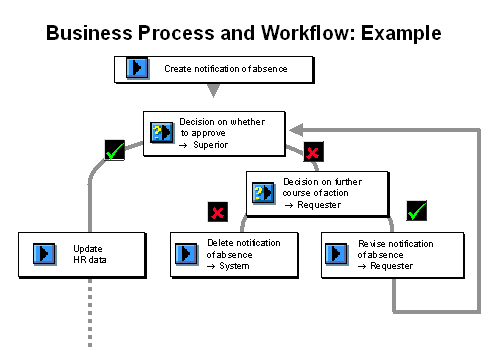
Regardless of your industry or vertical, your applications should ensure end-user satisfaction and boost productivity for employees and partners. Therefore, IT pros implementing or monitoring applications should take the time to understand how end-users interact with their application, share the proper amount of information with the right stakeholders, apply the right workflows and ensure they are performing top-notch. Here are some quick tips to help you get started.
Prioritise which applications should be monitored first
With an increasing number of employees bypassing IT and going rogue to the cloud, it is the wild, wild, west out there. Plus, counting legacy applications, Citrix and Terminal server hosted apps, CRM, EHR, custom-built applications, accounting, invoicing, HR, email and collaboration tools, the list of applications your employees, partners or customers rely on is long! Your applications fuel your business, so they must consistently perform well, and ultra-fast. Since you have to start somewhere, identify those critical applications that must perform well to run your business (e.g. applications migrated to the cloud, CRM, ERP, EHR systems) and monitor them first. You know better than anybody else what is critical to your business and users.
Identify critical transactions to monitor
Put on your “think from an end-user perspective hat” and map out common functions used by your power users, including those who use your applications the most as well as those who are driving the most revenue and key function. Or better yet, schedule a meeting with your business counterparts and stakeholders to identify critical functionality from their perspective. If you recently went through the process of implementing a new app, you should have your workflows already mapped. Right?
For instance, with Epic EMR, both patients and doctors access MyChart records, so you should monitor response time from both patient and doctor perspectives as shown below.
• Doctor– MyChart log-in –> Access a patient record–> Add visit log–> Save–> Logout
• Patient– MyChart log-in –> Access my record–> Search for recent test results or next appointment date –> Logout
Similarly, thinking about a CRM system and how your users interact with it.
• Sales Rep- CRM log-in –> Open a customer record –>Add a sales log –>Log-out
• Sales Manager- CRM log-in –>Access sales pipeline –>Generate a report –>Log-out
As you document critical transaction paths or workflows for your application users, this is a great time to tune your processes fine and minimise the number of steps needed for everyday functions.
Proactively monitor your applications from an end-user perspective
End-users are more impatient than ever before. Therefore, you should continuously monitor each one of these critical transactions from a user perspective, taking response time measurements for each step to ensure user SLAs are met. It is unacceptable that in 35 percent of cases IT learns that there is an issue when a user opens a helpdesk ticket or calls (Source: Forrester Research). Change the game and get ahead; find and resolve bottlenecks, errors, and constraints, problems before your users are impacted.

Decide polling frequencies and alerting policies
A good rule of thumb is to monitor key transactions more frequently like being able to send a sales proposal is more critical than reporting on sales pipeline or being able to sell online is more important that reading a product review to identify performance degradation signs earlier. Take the time to define who should be alerted in the event of specific threshold violations and configure the number of response time violations that will trigger an alert to eliminate false positives and alert storms. Don’t forget to look for the key monitoring functionality like scheduling and monitoring tests or disable alerting on scheduled maintenance periods or when you are on vacation. You should be in control of your monitoring.
Identify geographical response time discrepancies early on
Employees at remote offices could experience slower response times than those accessing your applications from headquarters; legacy application could underperform for some offices or branches. Get ahead of user complaints. The faster way to find and resolve problems like this is to monitor and compare availability and response time of your applications across multiple monitoring locations like headquarters or some remote office locations.
Define your custom reports
Since different metrics are important for various stakeholders, take the time to map out role-based reports with custom information for each team (per application, per transaction, per functionality) and automatically distribute reports on an ongoing basis like daily, weekly or monthly basis to keep everybody informed and aligned.
Centralise IT response procedures and workflow
From legacy applications to client-server applications, to web applications, to home-grown custom applications and cloud-based or green screen apps, most large enterprises have a complex portfolio with 250-500 applications to support. The cost of purchasing, configuring and maintaining several monitoring products to support individual applications is too high. Plus the lack of integration across monitoring consoles results in islands of uncorrelated information which lead to wrong conclusions, hinders troubleshooting and increases Mean-Time-To-Resolution (MTTR). Instead, look for one solution that lets you test and monitor all applications, so you can quickly identify problem root cause.
Keep everybody in the loop
In a new era where customer satisfaction rules, you need to continuously validate and demonstrate your SLAs, so go ahead and periodically share your SLA reports with your users and stakeholders. Provide a quick summary dashboard with a drill-in so that they don’t have to peruse voluminous reports. Plus, since user satisfaction is the ultimate measurement of IT success (your success), this is the best metric to promote the value that IT provides to your organisation.
Review results on an ongoing basis
Do you need to fine-tune? Do you need to optimise application performance? With a metric-driven strategy in place, you can keep all stakeholders in the know, and take informed business decisions that directly impact your bottom line say quickly ascertain if you need to focus on performance optimisation or not or some change in cloud providers.
Ensure quality
Build a culture where application quality is not an afterthought. You should include testing (functional testing, regression testing, performance testing, load testing) in all application development/application implementation cycles right from the beginning to ensure quality. Being able to reuse your testing scripts for production monitoring will also help streamline processes.
In summary, your end-users have the ultimate say on whether they are satisfied with the speed, availability and performance of your applications, so implement and monitor your applications from your end-users’ perspective. And don’t forget your mobile users! Smart devices are not only competing for PCs’ place in your users’ lives, or in the enterprise, – they are replacing the experience. In fact, smartphones and tablets now account for 60 percent of total Internet time (Source: comScore). And mobile user expectations are on par with, if not higher than, their desktop counterparts. Therefore, look for SLA application monitoring for both mobile and desktop users. Good luck!








































































